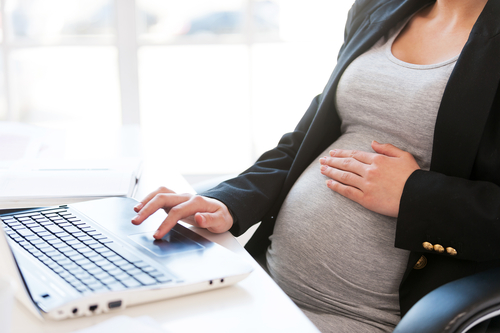
By Jo Stubbs, Head of Content, XpertHR
Companies looking to make redundancies in 2018 need to be particularly careful when dealing with employees who are pregnant or on maternity leave and ensure they follow the law correctly.
According to the maternity rights charity, Maternity Action, there are over 500,000 pregnant women in the workplace annually, many of whom take a period of maternity leave before returning to work.
The charity revealed last year that one in every twenty mothers are made redundant during pregnancy or maternity leave or when they return to work.
There can be confusion amongst employers around the issue of redundancy when an employee is pregnant or on maternity leave over what is permitted, given such employees are afforded special protection under employment legislation and may bring claims in an employment tribunal if not treated fairly.
The potential claims that can arise if the law isn’t followed are unfair dismissal, pregnancy and maternity discrimination and sex discrimination.
It is automatically unfair for an employer to select a woman for redundancy for pregnancy, childbirth or maternity-related reasons. Further, she is not required to have the normal two years of qualifying service to bring such a complaint.
A dismissal because of an employee’s pregnancy, pregnancy-related illness or maternity leave will also amount to an act of pregnancy and maternity discrimination under the Equality Act 2010.
For employers dealing with pregnant employees and those on maternity leave in a redundancy situation this year, here are the key steps they must follow:
- Ensure that any selection criteria are objective and non-discriminatory and that they are applied fairly. While it goes without saying that an employer should not select an employee for redundancy simply because she is pregnant or on maternity leave, the employer also needs to ensure that any selection criteria do not indirectly discriminate against pregnant employees or those on maternity leave.
- When carrying out consultation remember to include those on maternity leave. Women on maternity leave should be given information about the proposed redundancies in the same way and at the same time as other employees and should be involved in the consultation process. If a woman on maternity leave is excluded from the consultation process, this is likely to render any dismissal unfair and amount to pregnancy and maternity discrimination.
- Offer any suitable vacancies to those employees on maternity leave. If a vacancy that is suitable for an employee on maternity leave exists, she must be offered it even if this means that she is treated more favourably than her colleagues who are also at risk of redundancy. This is the case even if the other employees are better qualified for the position than she is.
- Consider whether an employee will be entitled to receive statutory maternity pay, even if she is made redundant before it becomes payable. Once a woman has qualified for statutory maternity pay she will be eligible to be paid for the full 39-week period even if she is subsequently made redundant. She will be entitled to statutory maternity pay if she is dismissed after the start of the qualifying week (the 15th week before the expected week of childbirth), even if she was not planning to start her maternity leave until closer to her due date.
- Provide a written statement of reasons for dismissal without waiting for a request for one. The Employment Rights Act 1996 states an employee is entitled to receive a written statement of the reasons for her dismissal if she is dismissed at any time while she is pregnant, or if she is dismissed after childbirth and her maternity leave period comes to an end because of her dismissal. If her employer unreasonably fails to provide the statement or provides inadequate or untrue reasons the employee may present a complaint to an employment tribunal.
Click here to read XpertHR’s guidance in full.
About the author
 Jo Stubbs is head of content for XpertHR, the UK’s most comprehensive online source of legal compliance, good practice and benchmarking information made available to HR professionals as a single subscription service.
Jo Stubbs is head of content for XpertHR, the UK’s most comprehensive online source of legal compliance, good practice and benchmarking information made available to HR professionals as a single subscription service.
Before joining XpertHR, where Jo has worked since 2001, she was an editor and then senior editor in the employment law and HR publishing centre at Croner, editing a variety of loose-leaf products including Croner’s Employment Law and Discrimination Law manuals.
Jo has an LLM in employment law in practice.








